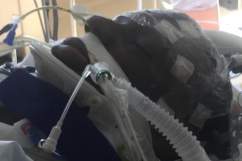A 25-year-old Baltimore, Maryland man died Sunday after spending seven days in a coma as a result of injuries he suffered while in the custody of city police, the Baltimore Sun reports.
Freddie Gray was arrested April 12 by four officers outside a public housing complex. Police have not yet said why Gray was arrested. Police said four bicycle officers tried to stop Gray for an unspecified reason and he ran from them. They caught him and detained him while waiting for backup.
Bystanders captured the end of his arrest on cell phone video (watch it above) as he was loaded into a police transport van. An ambulance was called to the police station 30 minutes later to take Gray to a hospital.
Police said the video does not show any use of force by the officers, according to The Associated Press. Witnesses can be heard screaming at the officers, saying Gray’s legs looked broken as the officers dragged him to a transport vehicle.
According to charging documents acquired by the Guardian, police claim Gray was injured while being transported to the Western District headquarters in the van, not during the arrest, which was made without force, police claim.
Here’s what you need to know about Gray’s death:
1. Gray’s Spine Was ’80 Percent Severed’ at His Neck While in Police Custody
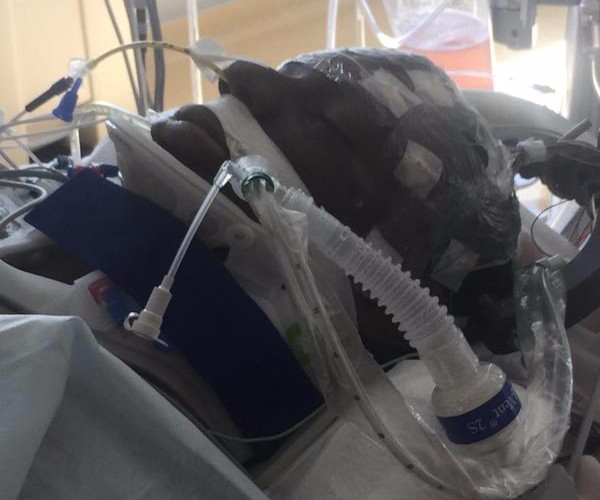
Freddie Gray in a coma in the hospital after his arrest in Baltimore on April 12.
An attorney representing Gray’s family said the Baltimore man was “healthy” prior to his arrest. In a statement, attorney Billy Murphy Jr. said, “While in police custody his spine was 80 percent severed at his neck. He lapsed into a coma, died, was resuscitated, stayed on a coma, and on Monday, underwent extensive surgery at Shock Trauma to save his life. He clung to life for seven days.”
His family previously told the Baltimore Sun that Gray had three broken vertebrae and an injured voice box. His stepfather, Richard Shipley, told the Sun that Gray didn’t suffer a brain injury, but was without oxygen for a time.
Gray’s sister, Carolina, told the Guardian, “The officers who did this need to be arrested now, locked in jail and charged with murder. And this all needs to be investigated by separate police. How can Baltimore police look into their own?”
His sister told the Guardian, “Something is wrong. They’re killing us black people. They should be here to protect us, but they’re not protecting us – they’re beating us.”
Documents posted online by the Guardian claim that Gray was “arrested without force or incident.” A knife was found clipped to his pocket during the arrest.
According to the document, Gray “suffered a medical emergency” during transport by the wagon and “was immediately transported to Shock Trauma via Medic.”
2. Police Have Said Only That Gray Was ‘Involved’ or ‘Recently Involved’ in ‘Criminal Activity’
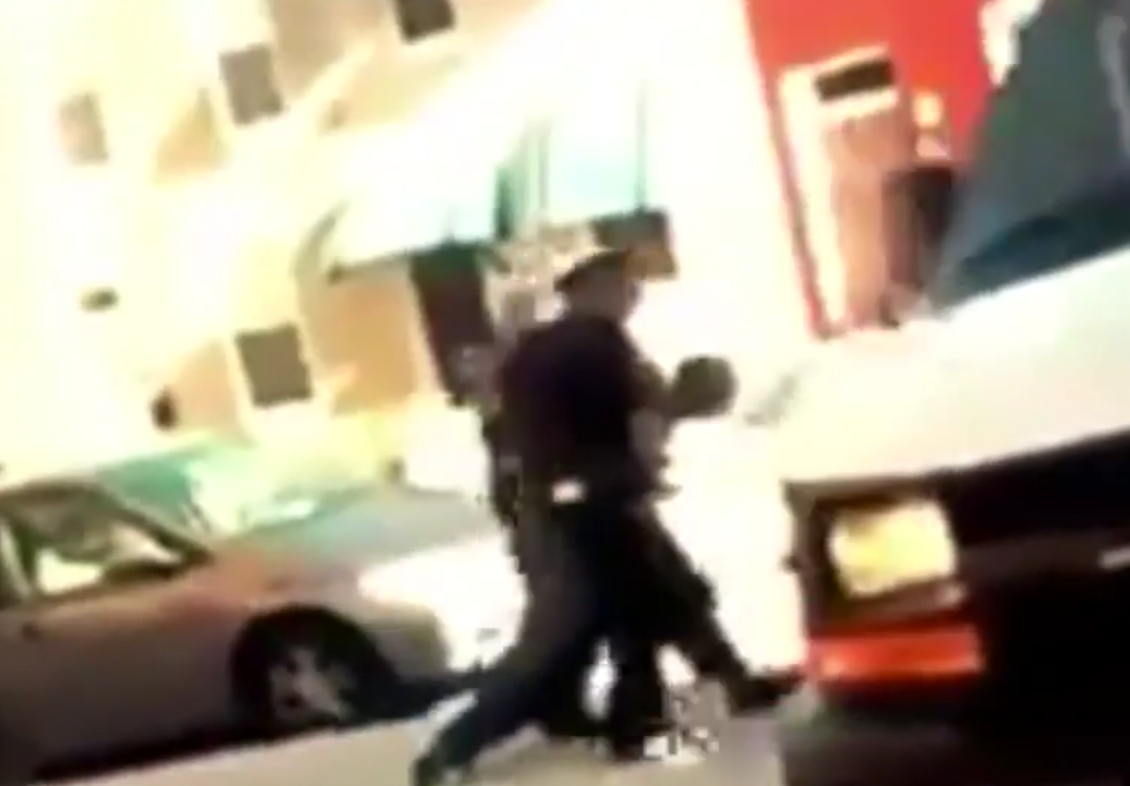
A screenshot from cell phone video taken by a bystander shows police dragging Freddie Gray toward the transport van.
Details of what led police to try to arrest Gray have not been made public by police. Deputy Police Commissioner Jerry Rodriguez told the Baltimore Sun that details of the arrest remain “a bit vague,” and that the officers patrolling a high-crime area with drug issues believed Gray was “immediately involved or had been recently involved in criminal activity.”
Documents obtained by the Guardian show that he was charged with unlawful possession of a switch blade knife, which was found after he was detained. The documents are not clear about what led to the stop. No other charges are listed.
Gray had a lengthy criminal history, including convictions for dealing cocaine, possession of narcotics, illegal gambling, possession of narcotics over 10 grams, manufacturing narcotics, distribution of narcotics, possession of stolen property and burglary, according to state court records.
The Associated Press reports Gray has been in and out of prison on drug convictions since 2008, according to online court records. He was set to start a trial in May on drug charges stemming from a December arrest.
“We had officers in a high-crime area known to have high narcotic incidents,” Rodriguez said, according to the AP. “The officers believe that Mr. Gray was immediately involved or recently involved in criminal activity and decided to make contact.”
Police released a timetable of the events leading up to Gray’s arrest and death. He was seen at about 8:40 a.m. on April 12 on a street northwest of the city’s downtown. The officers approached Gray and he ran. He was caught about two minutes later two blocks away. The officers called for a transport van at about 8:42 p.m. Then, at 8:54 a.m., a block away from where Gray was arrested, the van left for the Western District station “after stopping to place additional restraints on the suspect.”
Police said video, which hasn’t been released, shows the suspect is conscious and speaking. At about 9:24 a.m., an ambulance is called to the Western District station.
But Murphy, the family’s attorney, disputes that timeline, according to the AP. Murphy said witnesses he has interviewed claim the van stopped with Gray inside at leance once between when he was arrested and when he arrived at the Western District. Murphy said:
Witnesses say police stopped the vehicle and took him out of the vehicle for reasons that are unknown to us and put him back in the vehicle. Now we hear from reliable sources that they may have stopped two or three more times and taken the man out of the vehicle or dealt with the man in some kind of way in the vehicle before taking him to the Western District.
3. Gray’s Family Has Accused Police of Covering-Up the Details of His Death
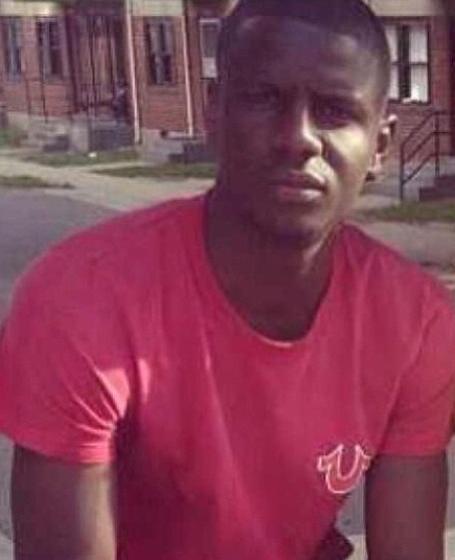
Freddie Gray (Family Photo)
“We believe the police are keeping the circumstances of Freddie’s death a secret until they develop a version of events that will absolve them of all responsibility,” Murphy said in his statement to the media. “However, his family and the citizens of Baltimore deserve to know the real truth; and we will not stop until we get justice for Freddie.”
Police have said that they aren’t releasing further details as to not compromise the investigation into Gray’s death.
According to The Associated Press,Rodriguez said:
It’s a two-part investigation. One is a criminal case, for Mr. Gray and also the officers. We always have that component in there to determine whether there is criminal culpability.
4. His Death Has Sparked Protests in Baltimore
Protesters have hit the streets in Baltimore demanding answers from police about Gray’s arrest. Hundreds protested Saturday, April 25, a week after Gray’s death, with some violence reported.
Baltimore Police said 31 adults and four juveniles were
arrested during the protests. Six officers suffered minor injuries and some property damage was also reported.
The department said in a statement:
Groups of outside agitators led to small pockets of protestors engaged in criminal activity. … While the vast majority of arrests refect local residency, the total number of arrests does not account for every incident of criminal activity. The Baltimore Police Department believes that outside agitators continue to be the instigators behind acts of violence and destruction.
5. The City Has Promised a Transparent Investigation Into Gray’s Death
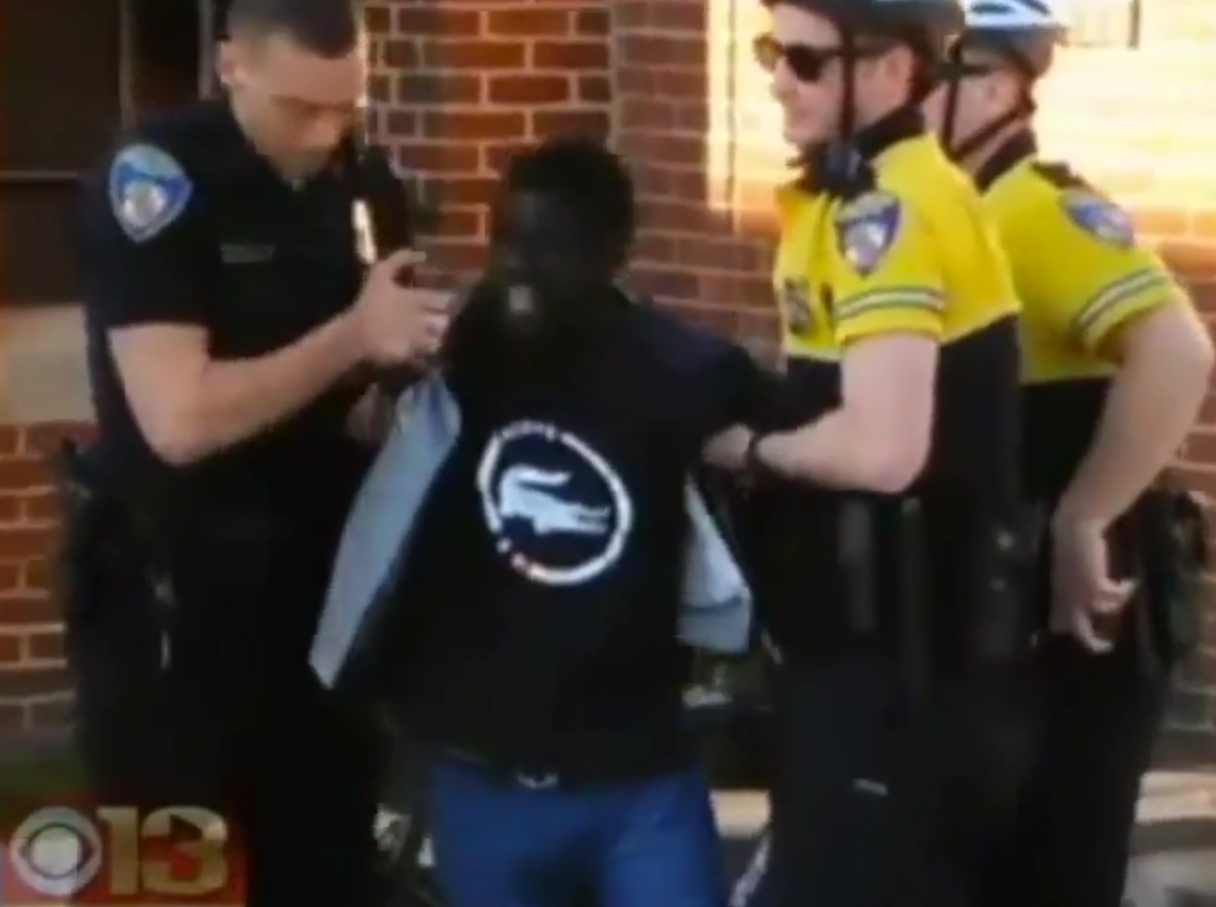
A video given to CBS 13 by a witness shows Freddie Gray being arrested by Baltimore Police.
Mayor Stephanie Rawlings-Blake said on Twitter on Sunday, “Right now we are still collecting details surrounding this incident, but I want our residents to know that we will get answers.”
Rawlings-Blake said on CNN that the officers possibly facing criminal charges or discipline have not yet been interviewed because of Maryland’s Law Enforcement Officers’ Bill of Rights. According to the Baltimore Sun, officers are not allowed to be questioned until days after the incident.
Police Commissioner Anthony Batts said at a press conference that “all lives matter,” after issuing sympathies to Gray’s family.
Officials said a task force will review the incident including training and lab personnel, homicide investigators and force investigation, according to the Baltimore Sun. An independent “blue ribbon” panel will also review the case against the officers after State’s Attorney Marilyn Mosby decides whether to file criminal charges.
The local police union posted a statement on Twitter:
The officers involved have been placed on administrative duty, according to CBS Baltimore.
